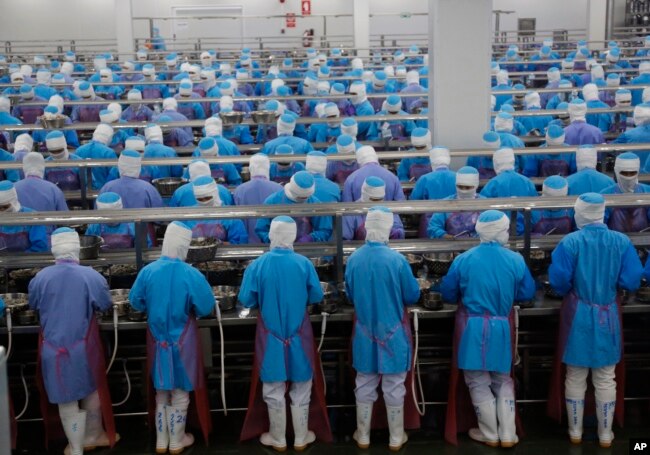In the Fight to End Modern Slavery, Machines May Hold Key
Source: CHENNAI
 Migrants are seen inside a truck after their rescue by the Libyan Coast Guard off the coast of Tripoli, March. 3, 2017. Some arriving migrants have been sold into slavery, the International Organization for Migration reports.
Migrants are seen inside a truck after their rescue by the Libyan Coast Guard off the coast of Tripoli, March. 3, 2017. Some arriving migrants have been sold into slavery, the International Organization for Migration reports.
More than 20 million people are working as modern slaves, and a technology developer is hoping artificial intelligence can help clean up the world’s supply chains and root out worker abuse.
Developer Padmini Ranganathan said mobile phones, media reports and surveillance cameras can all be mined for real-time data, which can in turn be fed into machines to create artificial intelligence (AI) that helps companies see more clearly what is happening down the line.
“The time to do this now is better than ever before, with so many countries and companies focusing on modern slavery,” she said. “At the start of the decade, the driving force for compliance was fear of being penalized. Now companies are looking at social impact and saying they want to do this.”
Workers peel shrimp at Thai Union factory in Samut Sakhon, Thailand. Facing international pressure for failing to stop human trafficking in its seafood sector, Thailand promised almost a year ago to compensate victims of slavery and industry leaders vowed to bring all fish processing in-house.

Workers peel shrimp at Thai Union factory in Samut Sakhon, Thailand. Facing international pressure for failing to stop human trafficking in its seafood sector, Thailand promised almost a year ago to compensate victims of slavery and industry leaders vowed to bring all fish processing in-house.
More scrutiny of modern-day slavery
Modern-day slavery has come under increasing scrutiny in recent years, putting regulatory and consumer pressure on companies to ensure their supply chains are free from forced labor, child workers and other forms of slavery.
Almost 21 million people are victims of forced labor, according to the International Labor Organization (ILO), with migrant workers and indigenous people particularly vulnerable.
But Ranganathan said there are new digital ways to stamp out exploitation, given humans have failed to end modern slavery.
“The technology can filter over 1 million articles a day using forced labor specific key words and highlight potential areas of risk in a supply chain,” she said.
Ranganathan works for information technology services company SAP Ariba, which helps companies better manage their procurement processes.
She said a new program could map weak links in corporate supply chains by culling data from a host of sources, from surveillance cameras to non-profits and other agencies.
“Artificial intelligence and machine learning can use these huge volumes of data and extract meaningful information,” she said.
Forced labor worth $150 billion
Forced labor in the private economy generates $150 billion in illegal profits per year, according to the ILO.
Ranganathan hopes her new program will curb that market and help create “supply chains with a conscience.”
For instance, she said it could help detect if child labor was used to pollinate cotton, which in turn was used to produce a branded shirt. Or it could help monitor labor conditions on cocoa plantations, giving companies “real-time exposure” so they can purge their supply chains of abuse right away.
“The convergence of technology will make things more transparent and real-time exposure can be created,” she said.
“In the AI world, techniques are being piloted where we could arm the lowest level supplier with a mobile app, ensure hotlines in factories, use of surveillance cameras and make this all a part of the contract.”
Ranganathan conceded that mapping the “last mile” of any supply chain was the hardest part, with many outsourcing work to homeworkers and small units, where data was harder to gather.
| }
|